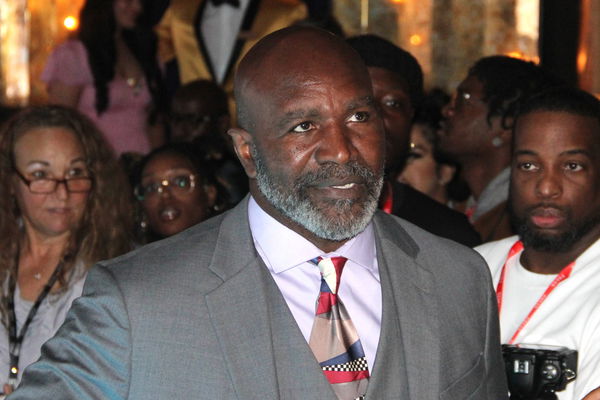
via Imago
NEW YORK, NY – FEBRUARY 10: Evander Holyfield at the Elysian fashion show at Runway 7 during New York Fashion Week 2023 at Sony Hall in New York City on February 10, 2023. PUBLICATIONxNOTxINxUSA Copyright: xErikxNielsenx

via Imago
NEW YORK, NY – FEBRUARY 10: Evander Holyfield at the Elysian fashion show at Runway 7 during New York Fashion Week 2023 at Sony Hall in New York City on February 10, 2023. PUBLICATIONxNOTxINxUSA Copyright: xErikxNielsenx
At a point in history, when the heavyweight class was populated by Titans, Evander Holyfield emerged as a driving force. The fighter, in his prime, undertook some of the most lethal fights ever. But such recognition was never served easily to him. He instead had to move up the ranks with each fight he took, facing a plethora of criticism, especially about how he looked.
Holyfield’s advent in the professional ring came in the year 1984 against Lionel Byarm in a New York fight. While he etched his name in the light heavyweight class through a victory, he differed heavily in looks from a typical heavyweight fighter. He was a timid fighter who still held the audacity to defeat a fighter twice as big as him. Today, years after he’s hung his gloves, he opens up about how he felt when people commented on his body.
ADVERTISEMENT
Article continues below this ad
Evander Holyfield reveals what ‘Skinny’ meant
In a conversation with DJ Vlad, ‘The Real Deal’ opened up about why he would be offended whenever someone spoke about his body and weight. He said, “I used to get mad when people used to call me skinny.” Why? Well, it’s not a simple answer. The fighter dwells deeper into the politics of what the word ‘skinny’ meant in those days. He revealed, “Cause in a point of calling you skinny back then, they were saying you poor. You ain’t got nothing to eat. And they laugh at you all the time.”
Further, the fighter continued, “Which was kind of sad like this but today I think about it and wow. The only thing you wanted to do (was) to be fat ’cause you want to tell people like. Its something about eating every day that made you feel like you were better than everybody.” He was 5 foot 8 inches and 147 pounds when he graduated high school. When he entered the pro ring, he was 6 feet and 2.5 inches tall, and his peak weight was 178 pounds.
An outline of the Evander wave
Evander Holyfield left an indelible mark on boxing history. He dominated the sport during the ’80s and ’90s. His career began in the amateur ranks, boasting a remarkable 160-14 record with 76 knockouts. He then captured the bronze medal at the 1984 Olympics. Transitioning to the professional circuit as a light heavyweight, Holyfield quickly ascended to the cruiserweight division. He claimed the WBA Cruiser Champion title in a battle against Dwight Muhammad Qawi in 1986.
ADVERTISEMENT
Article continues below this ad
Holyfield’s ascent continued as he triumphed in a showdown against IBF champ Ricky Parkey, securing the IBF title belt. Holyfield’s journey culminated with a victorious battle against Carlos de Leon, securing the WBC title before making a bold leap to the heavyweight division. He bulked up and challenged the heavyweight elite. His rise saw victories against James Tillis and a memorable triumph over Buster Douglas, claiming the WBA, WBC, and IBF Heavyweight Championships in 1990.
In a historic match dubbed the ‘Battle for the Ages,’ Holyfield faced George Foreman. He prevailed via a unanimous decision. However, Holyfield’s undefeated streak lapsed against Riddick Bowe in 1992. He relinquished his world championship belts. Yet, Holyfield remained undeterred. He led an epic clash against Mike Tyson in 1996. Holyfield’s TKO victory in Round 11 cemented his legacy, achieving the WBA title and marking the pinnacle of his career. He was undeterred by age and defied calls for retirement. Holyfield’s commitment shone through until his final match against Brian Nielsen in 2011. He retired at 48 with a TKO victory in Round 10.
ADVERTISEMENT
Article continues below this ad
Evander Holyfield’s remarkable career embodies resilience and determination. It earned him a revered place among boxing’s all-time legends. Tell us your favorite Holyfield moments in the comments section below.
Watch This Story: 5 Intriguing Facts You Need To Know About Evander Holyfield
ADVERTISEMENT
ADVERTISEMENT
ADVERTISEMENT
ADVERTISEMENT

